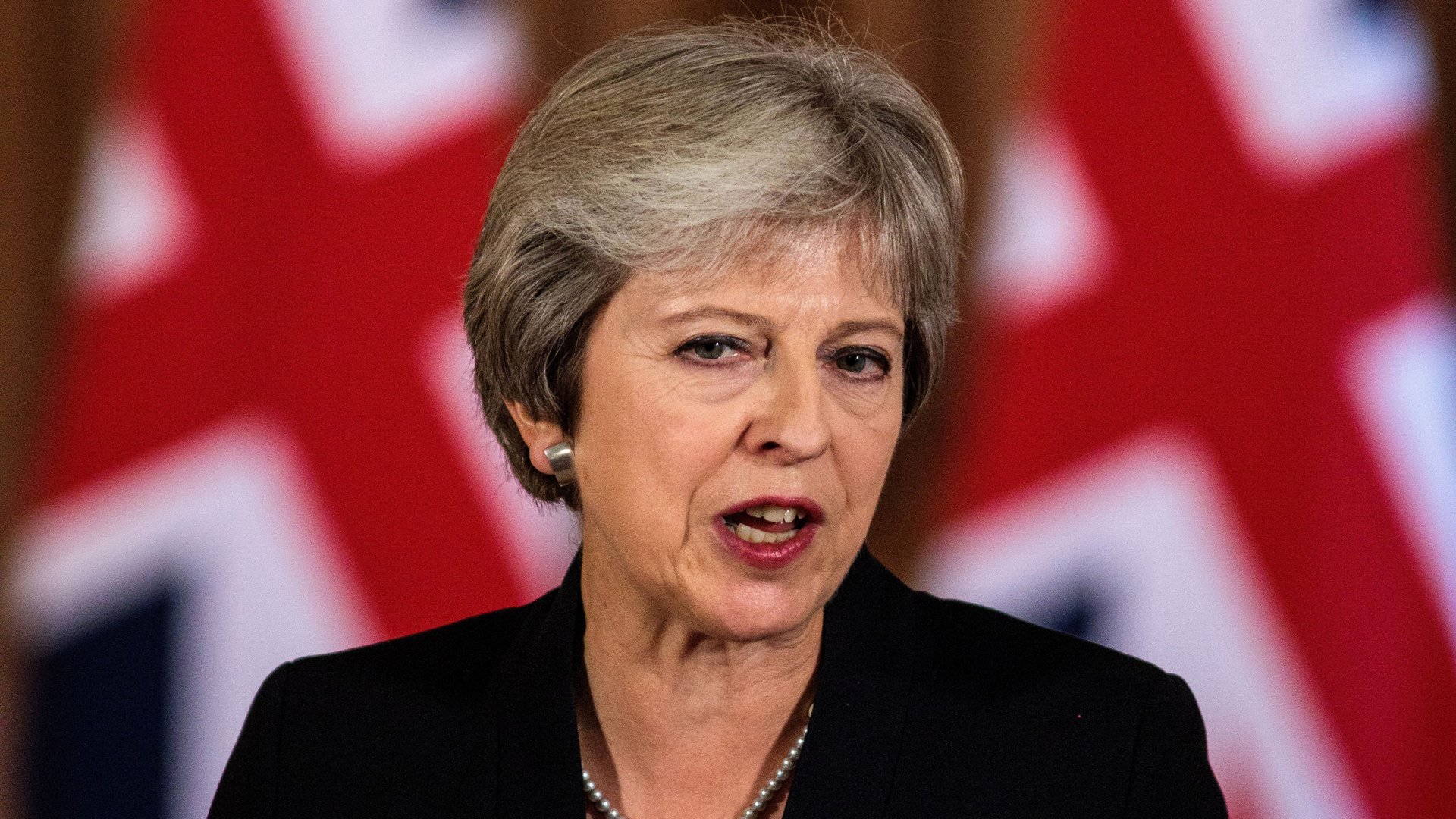Theresa May’s angry Brexit speech wasn’t really about the EU at all
UK prime minister Theresa May sounded steely today (Sept. 21) as she made a surprise speech in the wake of stalled Brexit talks with the European Union. But despite her fierce tone, analysts pointed out that her speech contained no changes to the current Brexit proposals—and was more about saving political face.


UK prime minister Theresa May sounded steely today (Sept. 21) as she made a surprise speech in the wake of stalled Brexit talks with the European Union. But despite her fierce tone, analysts pointed out that her speech contained no changes to the current Brexit proposals—and was more about saving political face.
Delivering a statement from 10 Downing Street, May came out swinging against EU officials after what was widely seen as a humiliating summit in Salzburg this week.
“Throughout this process, I have treated the EU with nothing but respect,” May said. “The UK expects the same.”
May honed in on two main sticking points in this late stage of Brexit negotiations. The first issue, she said, is that the EU is only offering two options for an economic relationship after Brexit. One option would involve the UK staying in the European economic area and in a customs union with the EU. “In plain English, this would mean we’d still have to abide by all the EU rules, uncontrolled immigration would continue, and we couldn’t do trade deals with other countries.”
The second, also unacceptable option, she said, is the EU’s demand that Northern Ireland remain part of the trading bloc—which would mean splitting it off from the rest of the UK. “It is something I will never agree to—indeed, in my judgement it is something no British prime minister would ever agree to,” she said.
The prime minister’s preferred option, which she proposed at the Salzburg summit, is the so-called Chequers blueprint. This plan proposes sharing common rules with the EU for goods but not services, thus helping to avoid a hard border after Brexit between Northern Ireland and the Republic of Ireland.
The Chequers proposal was rejected by European Council president Donald Tusk, who said that May’s plans need to be redrawn. The EU insists that there must be no physical border in Ireland, and wants the North to essentially remain within the EU’s Customs Union. The British government is dead-set against this: As May said in her speech, “It would mean breaking up our country.”
May’s speech seemed largely intended to signal to EU leaders that the UK has no intention of backing down. While the prime minister claimed, “No one wants a good deal more than me,” she also noted, “I have always said no deal is better than a bad deal.” She described the current state of negotiations with the EU as an “impasse,” and said the UK would continue with preparations to leave in the event of no deal. She also attempted to put the onus on EU officials to come up with an alternative plan to Chequers that would satisfy both parties.
“We now need to hear from the EU what the real issues are and what their alternatives are so we can discuss them,” she said.
Many analysts, including Manulife chief economist Megan Greene and BBC political editor Laura Kuenssberg, seemed to perceive May’s speech as an attempt to position the EU as a common “enemy” between herself and hard-line Brexiteers ahead of an upcoming Tory party conference.
And early reactions to May’s speech among Brexit hardliners seemed to indicate the strategy was working.
Meanwhile, the Liberal Democrats—the former coalition partner of the Conservatives—were quick to denounce the speech.
Whether her fiery rhetoric has successfully endeared May to her party will become more clear at the Tory party conference later this month.